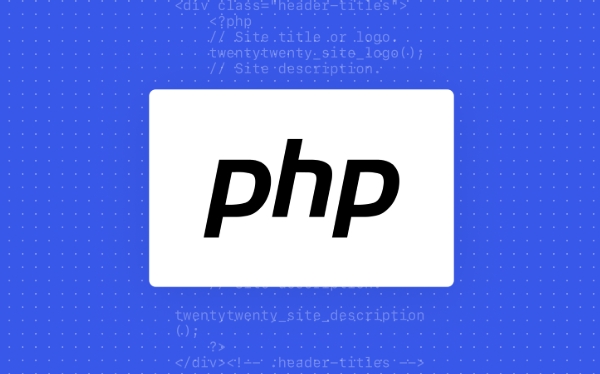 Backend Development
Backend Development
 PHP Tutorial
PHP Tutorial
 Demystifying Type Juggling: The Critical Difference Between `==` and `===`
Demystifying Type Juggling: The Critical Difference Between `==` and `===`
Demystifying Type Juggling: The Critical Difference Between `==` and `===`
Jul 30, 2025 am 05:42 AMUsing === instead of == is the key to avoid PHP type conversion errors, because == will cause unexpected results, and === compare values and types at the same time to ensure accurate judgment; for example, 0=="false" is true but 0==="false" is false, so when dealing with return values that may be 0, empty strings or false, === should be used to prevent logical errors.

When comparing values in PHP, understanding the difference between == and === isn't just academic—it can prevent subtle bugs that are hard to track down. At first glance, both operators seem to do the same thing: check if two values are equal. But under the hood, they work very differently, and choosing the wrong one can lead to unexpected results.

What Is Type Juggling?
PHP is a loosely typed language, which means it automatically converts variables from one type to another when needed. This feature is called type juggling . For example:
$number = "5"; // string $result = $number 3; // PHP converts "5" to integer 5
This flexibility is helpful—but dangerous when used in comparisons with == .

The == Operator: Loose Comparison with Type Juggling
The double equals ( == ) performs a loose comparison . It checks if two values are equivalent after PHP converts them to the same type.
This means that even if two values are different types, they might still be considered equal:

var_dump(5 == "5"); // true — string "5" becomes int 5 var_dump(0 == "abc"); // true — non-numeric string becomes 0 var_dump(true == "1"); // true — "1" is truthy and converts to true var_dump(false == ""); // true — empty string is false
These results surprise many developers. That "abc" equals 0 ? Yes—because PHP tries to convert "abc" to a number, fails, and returns 0 .
This behavior is the core of type juggling pitfalls.
The === Operator: Strict Comparison (No Type Juggling)
Triple equals ( === ) performs a strict comparison . It checks both value and type —no conversations allowed.
var_dump(5 === "5"); // false — int vs string var_dump(0 === "abc"); // false — int vs string, no conversion var_dump(true === "1"); // false — boolean vs string var_dump(false === ""); // false — boolean vs string
Here, the types must match exactly. This eliminates ambiguity.
Why Does This Matter in Real Code?
Consider a function that searches an array and returns the index:
$items = ['apple', 'banana', 'cherry']; $position = array_search('grape', $items); // returns false (not found)
Now check the result:
if ($position == false) {
echo "Item not found";
} Seems safe, right? But what if the item is at index 0 ?
$position = array_search('apple', $items); // returns 0
if ($position == false) {
echo "Item not found"; // This runs! But it's wrong.
} Because 0 == false is true due to type juggling, the code incorrectly reports the item wasn't found.
Fix it with strict comparison:
if ($position === false) {
echo "Item not found"; // Only triggers when truly not found
} Now, only an actual false (not found) passes the check— 0 does not.
Best Practices to Avoid Type Juggling Bugs
- Use
===and!==by default unless you intendally want type conversion. - Be extra careful when dealing with:
- Return values that can be
0,"", orfalse - Form inputs (which are always strings)
- Database results (which may return strings even for numbers)
- Return values that can be
- When in doubt, check the type explicitly:
if ($value === 0) { ... }Bottom Line
The key difference is simple:
-
==lets PHP change types before comparing (risky) -
===compares value and type exactly (safe and predictable)
Type juggling isn't evil—it's part of PHP's design—but relying on loose comparisons opens the door to logic errors. Using strict equality (
===) is a small habit that pays off in more reliable, easier-to-debug code.Basically: when comparing, ask yourself, “Do I care about the type?” If yes (and you usually should), use
===.The above is the detailed content of Demystifying Type Juggling: The Critical Difference Between `==` and `===`. For more information, please follow other related articles on the PHP Chinese website!
-

Hot AI Tools

Undress AI Tool
Undress images for free

Undresser.AI Undress
AI-powered app for creating realistic nude photos

AI Clothes Remover
Online AI tool for removing clothes from photos.

Clothoff.io
AI clothes remover

Video Face Swap
Swap faces in any video effortlessly with our completely free AI face swap tool!

Hot Article

Hot Tools

Notepad++7.3.1
Easy-to-use and free code editor

SublimeText3 Chinese version
Chinese version, very easy to use

Zend Studio 13.0.1
Powerful PHP integrated development environment

Dreamweaver CS6
Visual web development tools

SublimeText3 Mac version
God-level code editing software (SublimeText3)

Hot Topics
 Demystifying Type Juggling: The Critical Difference Between `==` and `===`
Jul 30, 2025 am 05:42 AM
Demystifying Type Juggling: The Critical Difference Between `==` and `===`
Jul 30, 2025 am 05:42 AM
Using === instead of == is the key to avoid PHP type conversion errors, because == will cause unexpected results, and === compare values and types at the same time to ensure accurate judgment; for example, 0=="false" is true but 0==="false" is false, so when dealing with return values that may be 0, empty strings or false, === should be used to prevent logical errors.
 When Not to Use the Ternary Operator: A Guide to Readability
Jul 30, 2025 am 05:36 AM
When Not to Use the Ternary Operator: A Guide to Readability
Jul 30, 2025 am 05:36 AM
Avoidnestedternariesastheyreducereadability;useif-elsechainsinstead.2.Don’tuseternariesforsideeffectslikefunctioncalls;useif-elseforcontrolflow.3.Skipternarieswithcomplexexpressionsinvolvinglongstringsorlogic;breakthemintovariablesorfunctions.4.Avoid
 Beyond `if-else`: Exploring PHP's Alternative Control Structures
Jul 30, 2025 am 02:03 AM
Beyond `if-else`: Exploring PHP's Alternative Control Structures
Jul 30, 2025 am 02:03 AM
The alternative control structure of PHP uses colons and keywords such as endif and endfor instead of curly braces, which can improve the readability of mixed HTML. 1. If-elseif-else starts with a colon and ends with an endif, making the condition block clearer; 2. Foreach is easier to identify in the template loop, and endforeach clearly indicates the end of the loop; 3. For and while are rarely used, they are also supported. This syntax has obvious advantages in view files: reduce syntax errors, enhance readability, and is similar to HTML tag structure. But curly braces should continue to be used in pure PHP files to avoid confusion. Therefore, alternative syntax is recommended in templates that mix PHP and HTML to improve code maintainability.
 Crafting Bulletproof Conditionals with Strict Type Comparisons
Jul 30, 2025 am 04:37 AM
Crafting Bulletproof Conditionals with Strict Type Comparisons
Jul 30, 2025 am 04:37 AM
Alwaysusestrictequality(===and!==)inJavaScripttoavoidunexpectedbehaviorfromtypecoercion.1.Looseequality(==)canleadtocounterintuitiveresultsbecauseitperformstypeconversion,making0==false,""==false,"1"==1,andnull==undefinedalltrue.2
 Refactoring Nested `if` Hell: Strategies for Cleaner Conditional Logic
Jul 30, 2025 am 04:28 AM
Refactoring Nested `if` Hell: Strategies for Cleaner Conditional Logic
Jul 30, 2025 am 04:28 AM
Useguardclausestoreturnearlyandflattenstructure.2.Extractcomplexconditionsintodescriptivefunctionsorvariablesforclarityandreuse.3.Replacemultipleconditioncombinationswithalookuptableorstrategypatterntocentralizelogic.4.Applypolymorphismtoeliminatetyp
 `&&` vs. `and`: Unveiling the Subtle but Critical Differences in PHP
Aug 01, 2025 am 06:04 AM
`&&` vs. `and`: Unveiling the Subtle but Critical Differences in PHP
Aug 01, 2025 am 06:04 AM
&& and and are the same logical functions in PHP, but the priority is different, resulting in different execution orders; && priority is higher than and and and the priority is lower than the assignment operator =; therefore $success=trueandfalse is actually parsed as ($success=true)andfalse, making $success still true; 1. Use && and || in conditional judgment; 2. Use and and or only in control flows (such as $file=fopen()ordie()); 3. Complex expressions should use brackets to clarify the priority; 4. Avoid mixing and/or in assignments unless explicitly intended.
 Mastering the Ternary Operator: A Deep Dive into Concise Conditionals
Jul 31, 2025 am 11:42 AM
Mastering the Ternary Operator: A Deep Dive into Concise Conditionals
Jul 31, 2025 am 11:42 AM
Theternaryoperatorisaconcisewaytowritesimpleif-elsestatementsinoneline,improvingcodereadabilitywhenusedappropriately.2.Itfollowsthesyntaxcondition?valueIfTrue:valueIfFalseinlanguageslikeJavaScriptandC ,whilePythonusesvalueIfTrueifconditionelsevalueI
 Understanding Operator Precedence in Complex PHP `if` Statements
Jul 31, 2025 pm 12:16 PM
Understanding Operator Precedence in Complex PHP `if` Statements
Jul 31, 2025 pm 12:16 PM
PHPevaluateslogicaloperatorsbasedonprecedence,where&&hashigherprecedencethan||and!hashighprecedence;thus,expressionslike$a||$b&&$careevaluatedas$a||($b&&$c),notlefttoright;toensurecorrectlogicandreadability,alwaysuseparenthese





